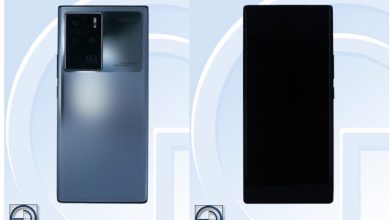This evening, Vivo has finally launched its Vivo X60 series. The phone consists of two models: the X60 and X60 Pro. The difference between the two models is too minimal.
The Vivo X60 series features a flexible 6.56-inch AMOLED display with a 120Hz refresh rate and 240Hz touch sampling rate. The display features a single punch hole, and its resolution is not mentioned. The screen has also passed the Swiss SGS screen certification.
The X60 is only 7.36mm thick and weighs 176.2g, while the X60 Pro is only 7.69mm thick and weighs 179g. Both phones feature a 3D curved design on the front and back. Vivo X60 series also features the classic two-tone cloud design.
Both phones are powered by the Samsung Exynos 1080 chipset. The Exynos 1080 is a mid-range octa-core 5G chipset based on the 5nm EUV process. It consists of four Cortex-A78 performance cores and four Cortex-A55 energy-saving cores. The chipset also has a Mali-G78 MP10 GPU.
The Vivo X60 series features a triple-camera module. The primary 48MP (Sony IMX598) lens has an aperture of f/1.48 and a focal length of 25 mm. There are two other cameras: a 13MP professional portrait lens with a focal length of 50mm and a 13MP 120-degree macro lens with a focal length of 16mm.
The Vivo X60 Pro also adds a fourth camera, which is an 8-megapixel periscope lens with a focal length of 125mm.
The primary camera of the Vivo X60 Pro uses new AOA technology to realize the primary camera of a f/1.48 ultra-large aperture. The light input is also 16.8% higher than the X50 Pro.
With the upgraded second-generation micro-head stabilizer, the VIS five-axis video anti-shake effect has been improved again. The anti-shake effect is also three times that of the traditional OIS anti-shake, bringing more stable, clearer, and lossless photo effects.
It is worth mentioning that the Vivo X60 series is based on the second-generation micro-panel to allow longer exposure time for shooting, which further cooperates with Vivo’s super night scene algorithm to realize the super night scene function.
The Vivo X60 series also features the classic Zeiss Biotar portrait style, making the central character clear while making the out-of-focus blur present a vortex, eye-catching, and dreamy surreal portrait photography effect. The Vivo X60 series is also equipped with old photo restoration and coloring functions, which restore the clarity of black and white portrait photos and can also color them.
Based on the second-generation micro-head gimbal stabilizer and the newly upgraded Vivo’s motion detection algorithm, Vivo X60 supports 1X and 2X multi-focal motion capture. In contrast, the Vivo X60 Pro can achieve 1X, 2X, and 5X multi-focal motion capture.
The Vivo X60 has a 4300mAh Battery, while the X60 Pro has a 4200mAh Battery. Both devices support the same 33W charging and run on the latest Origin OS.
The Vivo X60 has three storage variants: 8+128GB for CNY 3,498 ($535), 8+256GB for CNY 3,798 ($581), and 12+256GB for CNY 3,998 ($612). The Vivo X60 Pro has only one storage variant: 12+256GB for CNY 4,498 ($689).
The Vivo X60 series will be available in three colors: Original Force, Shimmer, and Huacai. The Shimmer color is not available in the X60 Pro.
The Vivo X60 Pro+ with Snapdragon 888 5G will be launched next month.








